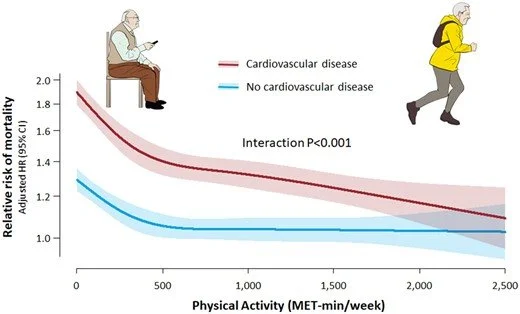Have You and Movement MET Yet?
In the previous blog, I spoke of “Less is More,” where you can still benefit from the effects of exercise through short 10 minute bursts. To meet the exercise recommendations, you can do this multiple times a day, shedding that dreaded long workout. Today, we’re going to redefine exercise. The word alone can feel daunting — like it’s staring at you with judgmental eyes, asking why you’re not lifting something heavy or sprinting up a hill. What if we ditched the word entirely? Let’s call it movement instead. Movement doesn’t come with rules or a checklist. It’s not about reps, sets, or who can sweat the most. It’s simply about using your body in ways you find enjoyable.
The Marvel of Movement
Here’s the thing: movement sneaks in everywhere. You don’t need a gym or an app telling you how to do it. Playing fetch with your dog? Movement. Pulling weeds in your garden? Movement. Chaotically shimmying around your kitchen while dinner simmers? Absolutely movement (and highly recommended).
It’s like the universe gave us this secret gift. Move a little more, feel a little better, and lower your risk of disease.
METs: The MVP of Movement
Let me introduce you to METs. No, it’s not a new workout trend or type of shoe. It stands for Metabolic Equivalents, and it’s basically science’s way of measuring how much energy you burn when you move.
Here’s a quick cheat sheet:
Sitting like a lump = 1.0 METs (you’re alive and breathing, so good job).
Walking at a decent pace = 3.0 METs
Busting a move in your living room = 5.0 - 7.0 METs.
Chasing a toddler who just discovered crayons + walls = priceless (but probably 6+ METs).
It is recommended to get 500 to 1000 MET minutes a week. For best results, you want activities that produce 3.0 or greater METs. How do you figure out MET minutes? You determine the METs per activity and multiply by the duration you did that activity.
Example: Walking on a firm, level surface at 2.5 mph (24 minute miles) = 3.0 METs per minute of walking. If you walk for an hour at that pace, you’d have earned 180 MET minutes. (3.0 METs per minute x 60 minutes.)
You may ask, “Well, that’s all good, but how many METs are there in any given activity?” Great question! Below are links to the compendiums that tell how many METs it takes to perform certain activities. They include everything from sports to every day things such as cleaning house.
2024 Adult Compendium of Physical Activites: A third update of the energy costs of human activities
Note: Codes in red mean those MET values are estimated.
Why METs Matter
Let’s talk perks. By adding more METs to your day (a.k.a. moving more), you’re doing amazing things to your health. Below are two graphs displaying the disease risk reduction by increasing your MET minutes a week. Remember, Less is More. The less MET rate per minute, the more minutes needed per day. The less time per day, the higher MET value needed. Also remember, activities with 3.0 MET value or greater bring the best health benefits.
The graph below is a comparison of people with cardiovascular disease and those without and their relative risk of mortality vs MET minutes a week.
The graph below shows level of disease reduction for ischaemic stroke, ischaemic heart disease, breast cancer, colon cancer and diabetes, (measured in MET minutes per week in thousands).
The greatest reduction of disease risk happens between 600 (the minimum level recommended by WHO) and 3600 MET minutes a week. The study also found that risk reduction percentages were lower as the MET minutes increased to much higher levels. For example, at 600 MET minutes a week, there was a 2% lower risk of diabetes compared to those who reported no physical activity. When activity was increased from 600 to 3600 MET minutes a week, there was an additional 19% diabetes risk reduction. However, when total METs per week were from 9000 to 12000 MET minutes a week the risk reduction was only an additional 0.6%. Again, diminishing returns beyond a certain point. Less really CAN be more. You don’t have to kill yourself to reduce disease causing mortality!
Your Movement, Your Way
Health benefits are a great thing about movement, do you know another great thing? It’s yours. No one’s grading you or checking your form (unless you’re taking a Zumba class, in which case, just smile and keep shimmying). Love biking but hate running? Perfect! Prefer gardening over squats? Fantastic! Do what brings you joy!
You don’t need to spend hours or exhaust yourself to reap the benefits. Start small:
A 10-minute stroll after dinner.
A midday stretch break (bonus points if your coworkers join in).
A spontaneous living room dance party.
Move for the Fun of It
When we stop obsessing over “exercise” and start celebrating movement, something magical happens. Movement becomes fun. It becomes something you want to do — not because you’re chasing a number on a scale, but because it feels good.
So, what’s your move today? A happy little wiggle? A brisk walk? Maybe just stretching your arms in the air and pretending you’re a starfish? Whatever it is, know that every little bit counts.
Let go of the idea that exercise has to be a slog. Instead, celebrate the power of movement — your way. After all, every move you make brings you closer to a healthier, happier you.
References:


